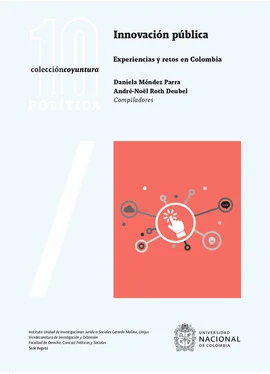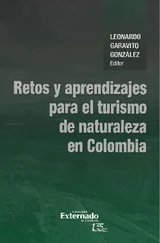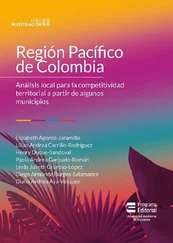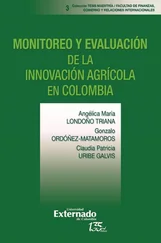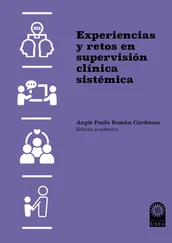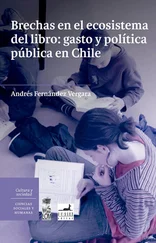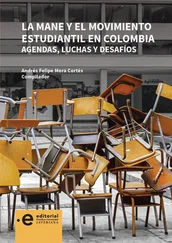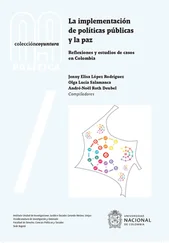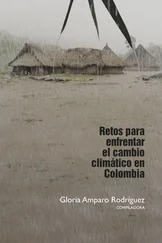Checkland, P. and J. Scholes (1990). Soft Systems Methodology in Action. Chichester: John Wiley.
Chesbrough, H. (2003). Open Innovation. The New Imperative for Creating and Profiting from Technology. Boston: Harvard Business School Publishing.
Cooke, B. y Kothari, U. (2001). The Case for Participation as Tyranny. En B. Cooke y U. Kothari (eds.), Participation: ¿ The New Tyranny? (pp. 1-15). Londres: Zed Books.
Cote, M. y Nightingale, A. (2012). Resilience Thinking Meets Social Theory: Situating Social Change In Socio-Ecological Systems (SES) Research. Progress in Human Geography, 36(4), 475-489.
Cumming, G., Olsson, P., Chapin III, F., y Holling, C. (2013). Resilience, Experimentation, and Scale Mismatches in Social-ecological Landscapes. Landscape Ecology, 28(6), 1139-1150.
Dewey, J. (1927). The Public and Its Problems. Nueva York: H. Holt and Company.
Drieschova, A. y Fischhendler, I. (2012). A Toolkit of Mechanisms to Reduce Uncertainty in International Water Treaties. Jerusalem: The Hebrew University of Jerusalem.
Dryzek, J. (1983). Don’t Toss Coins in Garbage Cans: A Prologue to Policy Design. Journal of Public Policy, 3(4), 345-367.
Dryzek, J. y Ripley, B. (1988). The Ambitions of Policy Design. Policy Studies Review, (7), 705-719.
Feola, G. (2015). Societal Transformation in Response to Global Environmental Change: a Review of Emerging Concepts. Ambio, 44(5), 376-390.
Folke, C. (2016). Resilience (Republished). Ecology and Society, 21(4), 44.
Folke, C., Carpenter, B., Walker, M., Scheffer, F., Chapin III, y Rockström, J. (2010). Resilience Thinking: Integrating Resilience, Adaptability and Transformability. Ecology and Society, 15(4), 20.
Folke, C., Carpenter, S., Elmqvist, T., Gunderson, L., Holling, C. y Walker, B. (2002). Resilience and Sustainable Development: Building Adaptive Capacity in a World of Transformations. Ambio, 31(5), 437-440.
Gamble, J. (2008). A Developmental Evaluation Primer. Montreal: J. W. McConnell Family Foundation.
Geels, F. y Kemp, R. (2006). Transitions, Transformations, and Reproduction: Dynamics in Socio-technical Systems. En M. McKelvey y M. Holmén (eds.), Flexibility and Stability in the Innovating Economy (pp. 227-257). Oxford: Oxford Scholarship Online.
Gibson, R., Kay, B., Loorbach, D., McCormick, K., Parodi, O., Rauschmayer, F., Schneidewind, U., Stauffacher, M., Stelzer, F., Trencher, G., Venjakob, J., Vergragt, P., von Wehrden, H. y Westley F. (2016). Learning through Evaluation. A Tentative Evaluative Scheme for Sustainability Transition Experiments. Journal of Cleaner Production, 169, 61-76.
Gunderson, L. y Holling, C. (eds.). (2002). Panarchy: Understanding Transformations in Human and Natural Systems. Washington: Island Press.
Gunderson, L., Holling, C. y Light, S. (1995). Barriers and Bridges to the Renewal of Ecosystems and Institutions. Nueva York: Columbia University Press.
Hirsch G., Pohl, C. y Bammer, G. (2010). Solving Problems through Transdisciplinary Research. En R. Froderman, K. Thompson y C. Mitcham (eds.) The Oxford Handbook of Interdisciplinarity (pp. 431-452). New York: Oxford University Press.
Holling, C. y Meffe, G. (1996). Command and Control and the Pathology of Natural Resource Management. Conservation Biology, JO(2), 328-337.
Jones, J. (1992). Design Methods: Seeds of Human Futures. Hoboken: John Wiley and Sons.
Kieboom, M. (2014). Lab Matters: Challenging the Practice of Social Innovation Laboratories. Amsterdam: Kennisland.
Kickert, W., Klijn, E. y Koppenjan, J. (1999). Managing Complex Networks, Strategies for The Public Sector. Londres: Thousand Oaks.
Kwakkel, J., Haasnoot, M., y Walker, W. (2016). Coping with The Wickedness of Public Policy Problems: Approaches for Decision-Making under Deep Uncertainty. Journal of Water Resources Planning and Management, 142(3), 1-5.
Learning from Innovation in Public Sector Environments (LIPSE). (2019). Página principal. Recuperado de http://www.lipse.org/
Lefebvre, H. (1991). The Production of Space. Oxford: Blackwell.
Linder, S. y Peters, B. (1984). From Social Theory to Policy Design. Journal of Public Policy, 4(3), 237-259.
Linder, S. y Peters, B. (1991). The Logic of Public Policy Design: Linking Policy Actors and Plausible Instruments. Knowledge & Policy, 4(1-2), 125-151.
Manzini, E. (2015). Design, When Everybody Designs. Cambridge: MIT Press.
Manzini, E. y Staszowski, E. (eds.). (2013). Public and Collaborative. Exploring the Intersection of Design, Social Innovation and Public Policy. Recuperado de https://www.desisnetwork.org/wp-content/uploads/2017/04/DESIS_PUBLIColab-Book.pdf
Meadows, D., Meadows, D., Randers, J. y Behrens III, W. (1972). The Limits to Growth: A Report for the Club of Rome’s Project on the Predicament of Mankind. Nueva York: Universe Books.
Miller, T., Wiek, A., Sarewitz, D., Robinson, J., Olsson, L., Kriebel, D. y Loorbach, D. (2014). The Future of Sustainability Science: A Solutions-oriented Research Agenda. Sustainability Science, 9(2), 239-246.
Mulgan, G., Tucker, S., Ali, R. y Sanders, B. (2007). Social Innovation: What Is, Why It Matters And How It Can Be Accelerated. Londres: The Young Foundation.
Nelson H. y Stolterman, E. (2014). The Design Way: Intentional Change in an Unpredictable World. Cambridge: MIT Press. Nesta (2014). i-teams: The Teams and Funds Making Innovation Happen in Governments around the World. Londres: Nesta; Bloomberg Philanthropies.
Nesta (2016). Designing for Public Services. Londres: Nesta.
Organización para la Cooperación y el Desarrollo Económicos (OCDE). (2014). Innovating the Public Sector: from Ideas to Impact. Recuperado de https://www.oecd.org/innovating-the-public-sector/Background-report.pdf
Organización para la Cooperación y el Desarrollo Económicos (OCDE). (2017a). Fostering Innovation in the Public Service. Recuperado de http://www.oecd.org/gov/fostering-innovation-in-the-public-sector-9789264270879-en.htm
Organización para la Cooperación y el Desarrollo Económicos (OCDE). (2017b). How do Public Sector Organizations Innovate? Recuperado de https://www.oecd.org/governance/observatory-public-sector-innovation/blog/page/howdopublicsectororganisationsinnovate.htm
Olsson, P., Gunderson, L., Carpenter, S., Ryan, P., Lebel, L., Folke, C. y Holling, C. (2006). Shooting the Rapids: Navigating Transitions to Adaptive Governance of Social-ecological Systems. Ecology and Society, 11(1).
Olsson, P., Galaz V., y Boonstra, W. (2014). Sustainability Transformations: A Resilience Perspective. Ecology and Society, 19(4), 1.
Ostrom, E. (2009). A General Framework for Analyzing Sustainability of Social-Ecological Systems. Science, (325), 419-422.
Pahl-Wostl, C. (2007). Transitions Towards Adaptive Management of Water Facing Climate and Global Change. Water Resources Management, (21), 49-62.
Patton M. (2011). Developmental Evaluation: Applying Complexity Concepts to Enhance Innovation and Use. New York: Guilford Press.
Pestoff, V. (2009). Towards a Paradigm of Democratic Participation: Citizen Participation and Co-Production of Personal Social
Services in Sweden. Annals of Public and Cooperative Economics, 80(2), 197-224.
Peters, G. (2015). Advanced Introduction to Public Policy. Cheltenham: Elgar.
Peters, G. (2017). Policy Design: From Technocracy to Complexity, and Beyond (documento inédito).
Peters, G. (2018). Policy Problems and Policy Design. Cheltenham: Edward Elgar.
Pohl, C. y Hirsch, G. (2008). Methodological Challenges of Transdisciplinary Research. Natures Sciences Sociétés, 16(2), 111-121.
Roe, E. (1994). Narrative Policy Analysis Theory and Practice. Durham: Duke University Press.
Schön, D. (1978). Generative Metaphor: A Perspective on Problem Setting in Social Policy. En A. Ortony (ed.), Metaphor and Thought (pp. 137-163). Cambridge: Cambridge University Press.
Читать дальше
